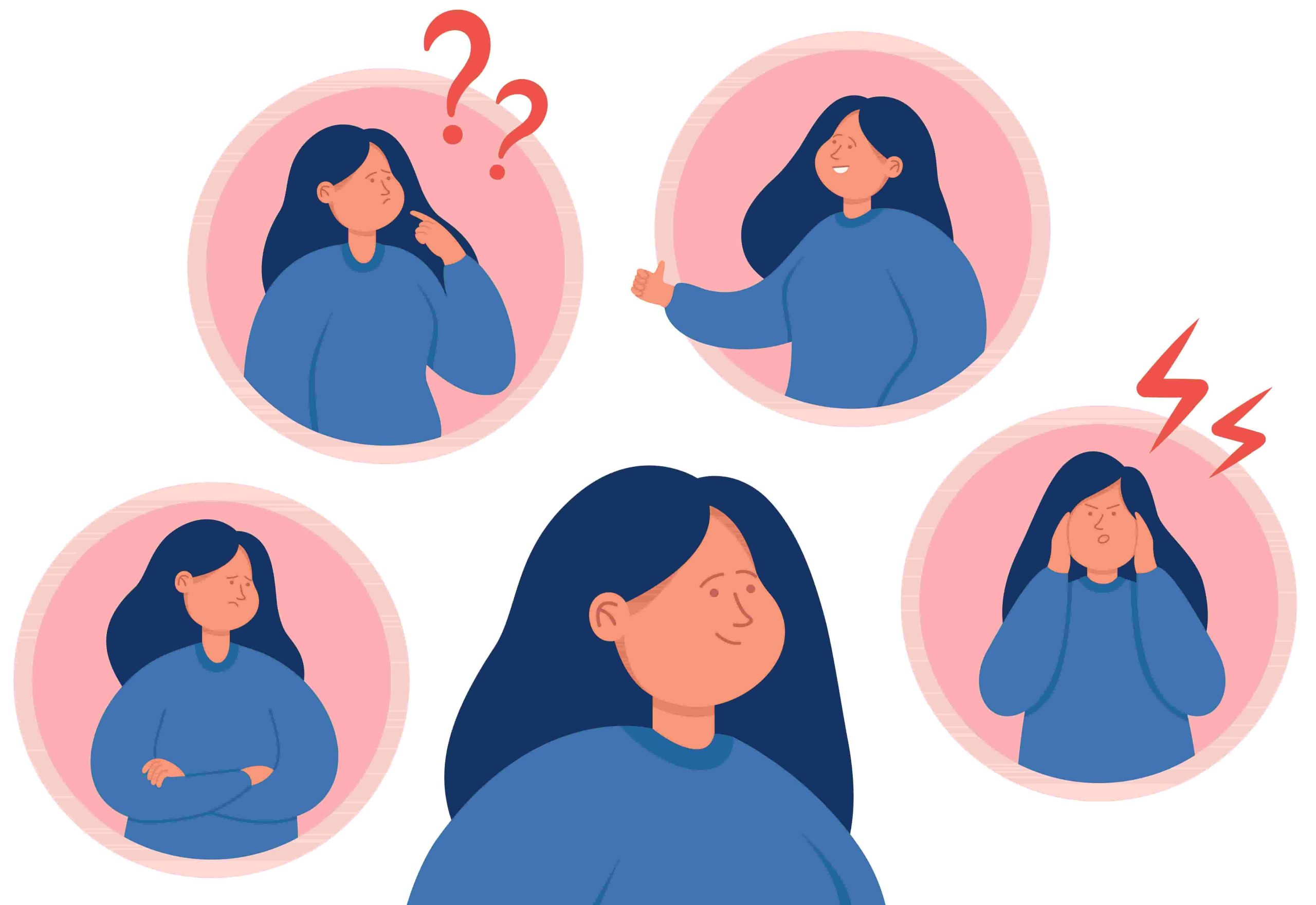Before your period, you may experience a cyclic phenomenon called premenstrual syndrome (PMS) that can lead to mood swings. You could start the day feeling fantastic, but an hour or two later, you might get grumpy for no clear reason. This is likely because of hormonal changes.
Other emotional PMS symptoms can involve:
– Feeling sad
– Getting easily irritated
– Feeling anxious
– Experiencing anger
What causes mood swings?
Even though the exact reasons behind PMS are not completely understood, these emotional ups and downs are believed to be tied to the hormonal changes, particularly estrogen, that happen during the menstrual cycle. Estrogen levels gradually increase after a woman’s period and reach their peak about two weeks later. Then, they plummet sharply before slowly rising again and dropping right before the next period. These hormonal fluctuations are believed to trigger mood swings and other menstrual symptoms.
How to take control of mood swings?
Whether your premenstrual mood swings are intense or more manageable, there are steps and lifestyle adjustments you can embrace to deal with them and improve your overall well-being. Here are some strategies to consider:
1. Stress-Busting Activities: If you’re aware that your mood tends to dip in the days leading up to your period, plan for it. Fill that premenstrual week with stress-relieving activities, like an exercise class, a massage, or a relaxing weekend. Surround yourself with things or people that uplift your spirits.
2. Fiber-Rich Diet: While you might crave sugary foods as your energy dips before your period, research has shown that indulging in sugary snacks and drinks could worsen PMS. Instead, opt for a diet rich in fiber throughout the month, including whole grains, oatmeal, brown rice, and leafy greens.
3. Regular Exercise: Even if hitting the gym is the last thing you want to do during premenstrual days, studies have indicated that engaging in aerobic exercise over eight weeks can reduce both the physical and psychological symptoms of PMS.
4. Consider Medication: For those dealing with Premenstrual Dysphoric Disorder, or PMDD, simple lifestyle changes might not be enough. PMDD is sometimes similar to premenstrual syndrome (PMS), but oftentimes more severe and includes more emotional and behavioral symptoms.Medication, such as combined hormonal contraceptive pills, has shown promise in alleviating PMDD symptoms. Discussing these options with your healthcare provider can be beneficial.
Takeaway
While it would be great if PMS simply didn’t exist, it’s essential to recognize that hormonal shifts and the accompanying physical and emotional symptoms are a natural part of the menstrual cycle. So it’s best to explore strategies that can make dealing with mood swings more manageable.
Sources:
Sheehan, J. (February 17, 2010). Mood Swings: PMS and Your Emotional Health. Everyday Health. https://www.everydayhealth.com/pms/mood-swings.aspx
Watson, S. (March 8, 2019). How to Deal with Premenstrual Mood Swings. Healthline. https://www.healthline.com/health/pms-mood-swings
DeTata, C. (November 9, 2018). PMS mood swings: Why they happen and how to manage them. Flo.



